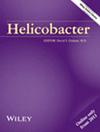Vonoprazan Improves Efficacy of Bismuth Quadruple Therapy for Helicobacter pylori Rescue Treatment: A Multicenter Randomized Controlled Trial
Abstract
Background
Rescue treatment for non-naive patients with persistent Helicobacter pylori (H. pylori) infection is lacking, especially in areas where tetracycline is unavailable. This trial aimed to evaluate the efficacy and safety of replacing proton pump inhibitor (PPI) with potassium-competitive acid blocker (P-CAB) in bismuth quadruple therapy (BQT) containing amoxicillin and furazolidone as rescue therapy.
Materials and Methods
We conducted a prospective, open-label, noninferiority randomized controlled trial at six institutions in eastern China. A total of 444 patients with a history of H. pylori treatment failure were enrolled and randomly assigned in a 1:1 ratio to either the 14-day P-CAB-BQT group (vonoprazan 20 mg, colloidal bismuth 200 mg, amoxicillin 1000 mg and furazolidone 100 mg, all given twice daily) or the 14-day PPI-BQT group (rabeprazole 10 mg given twice daily, and the same dose of three other drugs as the 14-day P-CAB-BQT group). The primary endpoint was the eradication rate assessed by 13C urea breath test. The secondary endpoints were adverse events and compliance.
Results
H. pylori eradication rates of PPI-BQT versus P-CAB-BQT group were 83.8% versus 91.9% in the intention-to-treat (ITT) analysis (treatment difference: 8.1%; 95% CI: 2.1%–14.1%; non-inferiority p < 0.001, p-value for difference = 0.008); 86.1% versus 95.8% in the modified ITT (MITT) analysis (treatment difference: 9.7%; 95% CI: 4.4%–15.0%; non-inferiority p < 0.001, p-value for difference < 0.001); and 86.3% versus 95.6% in the per-protocol (PP) analysis (treatment difference: 9.3%; 95% CI: 3.8%–14.8%; non-inferiority p < 0.001, p-value for difference < 0.001). The P-CAB-BQT regimen was shown to be non-inferior to the PPI-BQT regimen and yielded higher eradication rates across all analysis populations (ITT, MITT, and PP). The overall frequency of adverse events (27.9% and 34.2%, p = 0.151) and compliance (93.7% and 94.6%, p = 0.686) were similar between PPI and P-CAB groups. Among the patients suspected of drug-induced fever (8.6% and 7.2%, p = 0.597), 82.9% experienced fever after administration of furazolidone for > 10 days. The eradication rates were not affected by prior choice of antibiotics and the number of treatment attempts.
Conclusions
The 14-day P-CAB-BQT therapy containing amoxicillin and furazolidone provided a satisfactory eradication rate and a good safety profile as rescue treatment for H. pylori eradication, regardless of prior choice of antibiotics and the number of treatment attempts. Shortening the treatment course to 10–11 days could prevent the majority of drug-induced fevers.

 求助内容:
求助内容: 应助结果提醒方式:
应助结果提醒方式:


